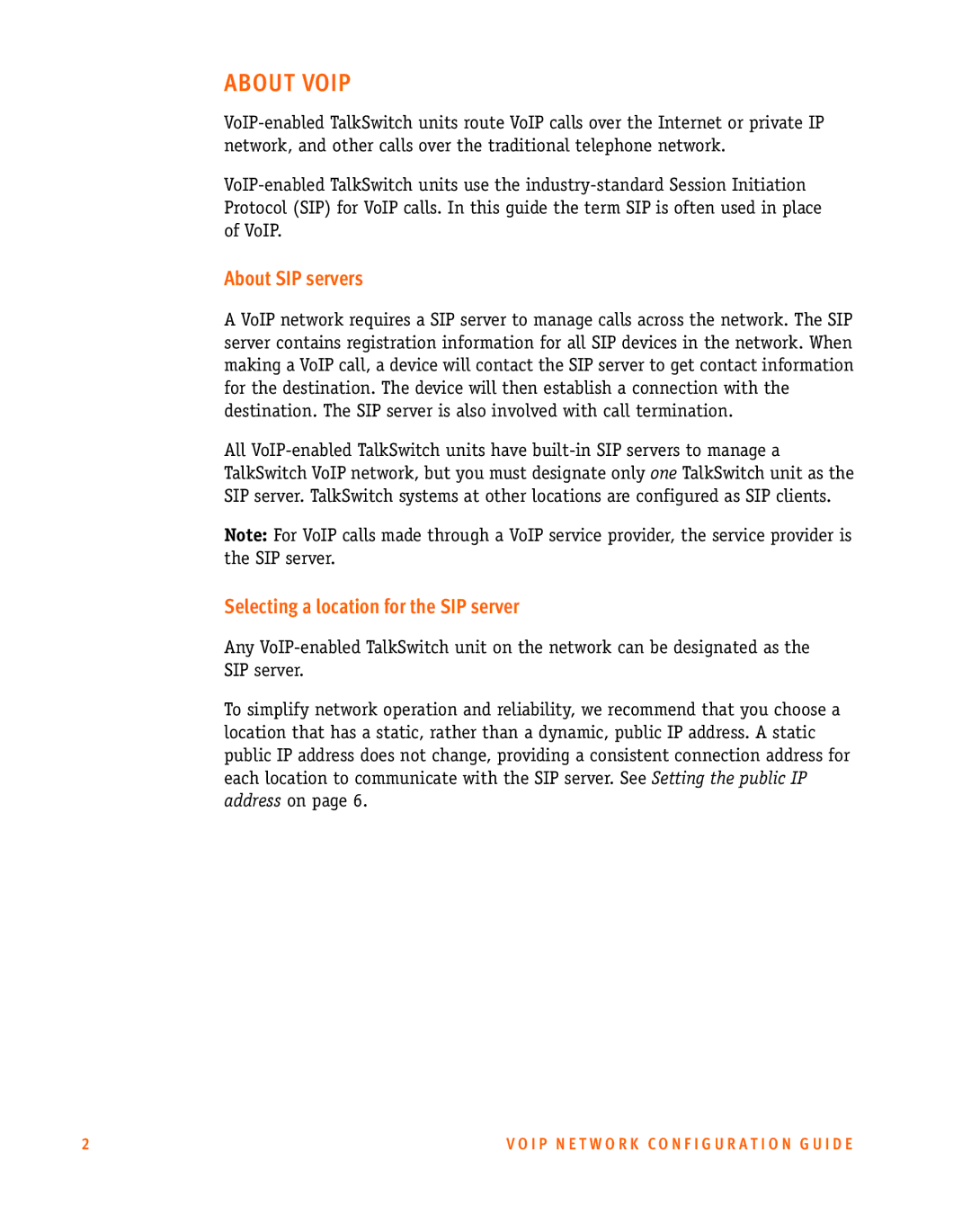ABOUT VOIP
About SIP servers
A VoIP network requires a SIP server to manage calls across the network. The SIP server contains registration information for all SIP devices in the network. When making a VoIP call, a device will contact the SIP server to get contact information for the destination. The device will then establish a connection with the destination. The SIP server is also involved with call termination.
All
Note: For VoIP calls made through a VoIP service provider, the service provider is the SIP server.
Selecting a location for the SIP server
Any
To simplify network operation and reliability, we recommend that you choose a location that has a static, rather than a dynamic, public IP address. A static public IP address does not change, providing a consistent connection address for each location to communicate with the SIP server. See Setting the public IP address on page 6.
2 | V O I P N E T W O R K C O N F I G U R A T I O N G U I D E |
